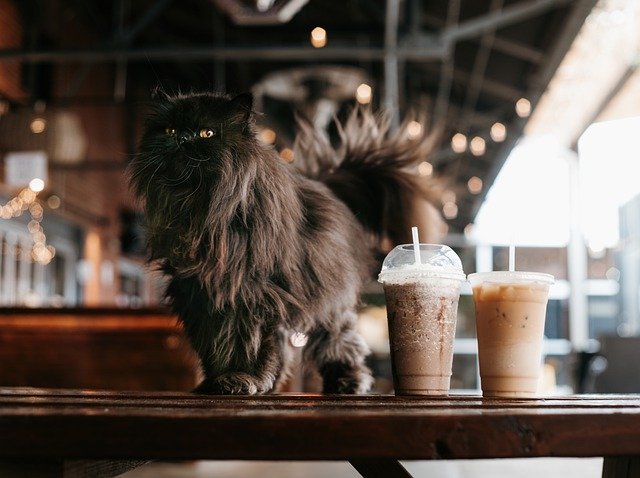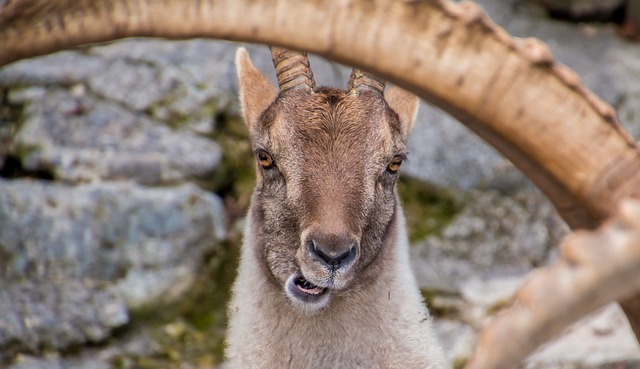
本日は、コーヒー豆の生産で有名な国と豆の種類を英文で読んでいきましょう。原文はこちら。ちなみにFarrer Coffeeはイギリスでも歴史あるコーヒー焙煎販売会社。いまも、湖水地方で紅茶とコーヒーのお店を家族経営しているそう。
その昔、アフリカのエチオピアとスーダンで栽培されていたコーヒーは、今では「ビーンベルト」と呼ばれる熱帯に位置する約70か国で栽培されている、世界で最も人気のある飲みものです。このうちの約50か国がコーヒーを世界に輸出しています。じつは、コーヒーは世界第二位の貿易財(取引商品)ということをご存じでしょうか(ちなみに第一位は石油)。
「豆」知識を得たところで、次はコーヒー生産国(輸出国)のベスト10をみていきましょう。
NO10 UGANDA (209,325 METRIC TONS)

Heading off to Africa we encounter Uganda entering the charts at number ten.
アフリカではウガンダが第10位にランクイン!
Uganda is mainly known for its robusta coffee. Cultivated for generations, the coffee beans are found indigenously deep within the rain forests. They’re thought to be among the rarest naturally occurring coffee trees anywhere.
「ロブスタコーヒー」が有名なウガンダ。ロブスタコーヒーは、熱帯雨林から自然発生したと言われています。
The main Robusta growing areas are in the western Nile, Okoro region, northern regions of Lira and Gulu, the eastern regions of Mbale and Bugisu the central and southwestern regions of Jinja, Mukono, Kampala and Masaka as well as the western regions of Kasese and Mbarara.
主にロブスタコーヒーが栽培されているところはどこでしょうか。いろいろな地名がでてくるので地図でチェックしましょう。
In recent years its making a name for its speciality Arabica. Ugandan Robusta is a step above most other forms of the bean, and they tend to have a wine like acidity, with rich notes of chocolate producing a decent brew.
最近は高品質なアラビカで有名なウガンダですが、ロブスタにはどんな特徴があるのでしょうか。、他のほとんどの豆の形態よりも一歩進んでおり、酸味のようなワインを持っている傾向があり、チョコレートの豊かなノートがまともな醸造を生み出します。
NO 9 GUATEMALA (245,441 METRIC TONS)

Beetling off to Central America we find Guatemala trundling along at number nine.
第9位は中央アメリカのグアテマラ!
Coffee wasn’t considered as a crop until the late 1850’s in the aftermath of the collapse of the country’s dye industry following introduction of chemical dyes to Europe’s textile industry.
1850年代、ヨーロッパで化学染料が導入されると、それまで染色産業が柱だったグアテマラは大打撃を受けます。コーヒーがめでたく作物として認められるのもこのころ。
By 1880 coffee accounted for 90% of Guatemala’s exports and to this day it is still their largest. The crop produced has a deserved reputation for quality. Almost exclusively Arabica, the main varieties include Caturra, Red and Yellow Catuai and Red and Yellow Bourbon. Guatemalan coffee beans thrive in areas with rich volcanic soil, low humidity, lots of sun, and cool nights, including the regions of Antigua, Acatenango, Atitlán, Cobán, Huehuetenango, Faijanes, San Marcos & Nuevo Orientea.
1880年までには輸出の90%を占めるコーヒーは現在でもグアテマラの主要輸出品です。アラビカ種が主流のグアテマラのコーヒー豆は、どんなところで育つのでししょうか。
At Farrer’s we particularly love Guatemala Coban. This coffee has dark chocolate flavour, luxuriously rich hazelnut top notes with hints of dark fruits.
ちなみにFarrer Coffee会社で人気なのはグアテマラコバン。top notesとは元は和音の最高音のことで、ここでは最初に感じる香りのこと。香水の世界でも使われる言葉でもあります。hint of は「かすかな、わずかな」の意味。コバンの香り、わかりましたか。
NO8 INDIA (234,000 METRIC TONS)

Scooting off to Asia and India wades in at number eight. From modest backgrounds India was badly affected by coffee rust in the 1870s and replaced many of their coffee farms with tea plantations. Indian is often thought of as a tea producing country, but the reality is that coffee has been about since the 1600s during the reign of the Mughal empire, tea didn’t arrive until the 1800s!
次に登場するのはインド。お茶の国と思われがちですが、実はムガール帝国時代から生産されていて、お茶より歴史が古かったとは。1870年代にあることが起きて、コーヒー農家はお茶の農園になっていったのですが、さて、その理由は?
Traditionally known for Arabica coffee, since the turn of the century, the majority of their crop is now robusta which makes up 60% of their total production.
インドはアラビカコーヒーがよく知られていますが、今世紀になってそれを上回った種は何でしょうか。
Coffee is grown mostly in the southern Indian states of Kerala, Tamil Nadu and Karnataka. The bulk of India’s coffee production is exported to Europe, where it is frequently used to make blended coffees. Coffee was brought back to India’s shores by a chap called Baba Budan, who smuggled several coffee beans from the Middle East into India, planted them in Karnataka, and the rest is history.
インドのコーヒーの大部分はどこに輸出されているのでしょうか。そしてどうやって使われているのでしょうか。
Our pick of the coffees from India has to be Monsoon Malabar. It’s unique processing involves the coffee beans being exposed to monsoon conditions. This helps deliver an unrivalled depth and character!
Farrer Coffee会社が取り扱っているインド産コーヒーはモンスーン・マラバール。名前の由来の通り、この豆の味を深めるのに必要な気候条件は?
NO7 PERU (346,466 METRIC TONS)

Hopping over to Peru, coffee is grown across 10 specific regions in the north, central belt and south of the country.
第7位は南米ペルー。10か所の特定地域で生産されているとのこと。
It’s certainly not a new crop either having been grown across the country since the 1700s. Coffee was often totally overlooked due to the nation’s poor business infrastructure, which meant most of the coffee produced was consumed domestically. This has changed in recent decades with farmers having the opportunity to export and hit world markets with their produce.
ペルーにとってコーヒーは新しい作物ではありません。1700年代から作られていたにも関わらず、国のビジネスインフラ(営業基盤)が脆弱だったために、主要輸出品とはなれず国内消費されていたのでした。もちろん、現在は・・・?
Many are discovering these coffees rival some of the best from around the globe. Peru coffee grown in the lowlands tend to be medium bodied with nutty floral and fruity notes, those grown in the highlands, specifically in the Andes are floral, rich and acidic and are just waiting to be discovered.
低地栽培のコーヒーと高地栽培のコーヒーの味の違いは?
NO6 ETHIOPIA (471,247 METRIC TONS)

Meanwhile in Africa, Ethiopia hits the heady heights at number six which is no surprise as it holds a special place in Ethiopian culture as the birthplace of coffee. There’s a very interesting story of how Arabica was discovered by a farmer and his dancing goats which we’ll save for another time…
コーヒー発祥の地として有名なエチオピア。ヤギ飼いと踊るヤギの物語はまた今度…
ということですが、特別にあらすじを。
むかしむかし、アビシニア(エチオピア)にカルディというヤギ飼いがいました。ある日のことカルディは、自分のヤギがある木の実を食べると急に騒がしく踊りだすことに気づきます。近くの修道院の院長にこの不思議な話を伝えると、自らその実を試そうと茹でて飲んでみたところ、気分が非常に爽快になった院長は、夜の儀式中に居眠りをする修道僧たちにも飲ませてみることにしました。効果てきめん、弟子たちは居眠りもせずに勤行に励むことができました。「眠らない修道院」の噂は国中に広まり、魔法の木の実が競って求められるようになりましたとさ。

Ethiopia offers thousands of varieties of bean, each with its own distinctive characteristics, with a wide range of flavours, and unlike most countries the best coffees are purely for local consumption and will never leave the country! Ethiopia’s coffee industry is nationalised and accounts for 10% of the country’s GDP!
エチオピアの最高級のコーヒーはどこで消費されるのでしょうか。そしてコーヒー産業を統括しているのは?


